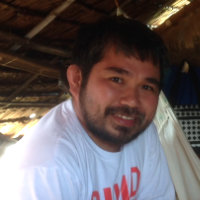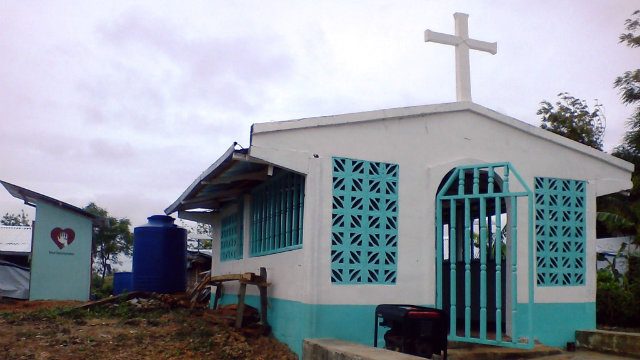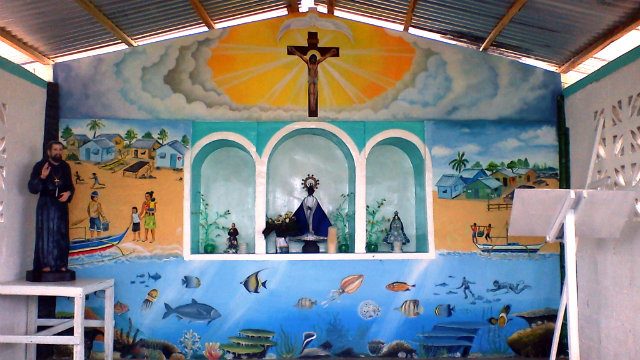SUMMARY
This is AI generated summarization, which may have errors. For context, always refer to the full article.
 Few months ago, together with a network of solidarity NGOs called ASIN (Alternative Solidarity Initiative Network) we visited the island of Mambacayao (dako) island, in Bantayan, Cebu to assess and carry out a rehabilitation response.
Few months ago, together with a network of solidarity NGOs called ASIN (Alternative Solidarity Initiative Network) we visited the island of Mambacayao (dako) island, in Bantayan, Cebu to assess and carry out a rehabilitation response.
We saw the plight of the community and the individual families. We tried to document their stories of poverty and struggles. All of them are helpless.
Yolanda’s devastation on the island community was ruthless, almost destroying the only homes they have. Even after more than a hundred days in the aftermath of the typhoon, they can hardly rebuild on their own.
Organizing the community
We gathered the community leaders, and solicited inputs on how we can rebuild the community of Mambacayao together.
Among the issues faced by the community, we zeroed in on the following:
- Rebuild the Chapel
- Construct two community CR (only two families have CR in the entire island),
- Build a community water catchment (the community is dependent on rain water), rebuild the houses,
- Build a community classroom (for literacy, numeracy and livelihood programs).
Rebuilding the island meant organizing the people first as a community. We encouraged them to unite, to settle conflicts, and to move forward both from within and outside issues of the community.
We are able to reorganize their fishing cooperative named Fishermen Association Mambacayao Dako (FAMD).
I tried to share their stories of struggles by writing an article. (READ: We need the government to protect the poor, not the rich)
The story generated more than 9,000 shares and the feedback elicited angry reactions. The story opened the hearts of many.
The story of Mambacayao is a story of many island communities who are left on their own – a contrast of ‘development’ and ‘progress’ uttered by our government leaders. Yes, I tried to partly blame our government on the inefficiency of governance, and even suggested “the situation is ripe for revolution.”
We brought our call to action into our way of helping. “if we don’t help them, what will happen to them?”

Hope is the message
Jesus’ resurrection is the hope of easter glory.
Giving hope – this is the strategy of HEARTanonymous.org.
We organized the initiative called ‘REBUILD Mambacayao’. We planned it to last for 10 days, with 10 carpenters, and and output of 10 houses.
When we got to work and ended a little more than 10 days, we were able to build 15 houses, 1 chapel, 2 community CRs (comfort rooms), 1 community water catchment, 5 pumpboats and distributed 20 solar lamps – truly, a miracle of goodness.
More so, we transformed the attitude of carpenters to be community builders. They journeyed together with the community elders who helped them accomplish the mission.
“Maayo na lang naabot mo, kay nahatagan mi sa among panganginahanglan” (We are thankful that you came because we received what we need) said Filomena Yonzon, a HEARthaus beneficiary.
The community, who from the start was hesitant to cooperate, now beams with gratitude and hope. Together, we learned and proved that if we unite as a community we can rise from destruction and hopelessness.

We thank the community too, who accepted us as their own, and for offering assistance in the rebuilding.
Balay Kinabuhi Center, a center of hope
Uniting to help Mambacayao, Balay Kinabuhi was set up to help the Yolanda survivors with the aim of advancing sustainable livelihood for families and communities affected by the typhoon.
It is an integrated livelihood center located in the parish compound of St. Francis of Assisi, spearheaded by Carmelites JPIC, Recoletos’Heartanonymous.org, Presentation Sisters, Balayan-USLS, ASIN and the Rural Missionaries of the Philippines in Negros island.
The following programs are currently implemented:
- Food-for-livelihood (fish products)
- Eco-formation (disaster preparedness drive through comics)
- College scholarship for deserving Yolanda survivors
- Revival of pumpboat making as a community livelihood enhancement (to date, Balay Kinabuhi fabricated almost 60 pumpboats for typhoon victims).
Balay Kinabuhi hopes to empower the livelihood trainees with appropriate knowledge and skills for entrepreneurial livelihood.
The words of Pope Francis in his 2014 Lenten Message speaks highly of the impact on rebuilding the communities:
“Material destitution is what is normally called poverty, and affects those living in conditions opposed to human dignity: those who lack basic rights and needs such as food, water, hygiene, work and the opportunity to develop and grow culturally. In response to this destitution, the Church offers her help, her diakonia, in meeting these needs and binding these wounds which disfigure the face of humanity. In the poor and outcast we see Christ’s face; by loving and helping the poor, we love and serve Christ. Our efforts are also directed to ending violations of human dignity, discrimination and abuse in the world, for these are so often the cause of destitution…”
Our work is a message of hope, close to the heart of the one who suffered, died and rise again – Jesus.
Close to the heart of Jesus, are the people in Mambacayao.
Jesus assured in this Easter reading: “Go tell my brothers to go to Galilee, and there they will see me”(Matthew 28:10).
Our work in Mambacayao will continue. We are now prioritizing the implementation of the literacy & numeracy program for the children and adults.
We still have to go back to Mambacayao. You can help. Share their story and encourage others to go to Mambacayao. – Rappler.com
Br. Tagoy Jakosalem is a visual artist and cultural worker. He is currently doing ministry at the University of Negros Occidental – Recoletos in Bacolod City, Negros Occidental.
iSpeak is a parking space for ideas worth sharing. Share your thoughts with us at move.ph@rappler.com
Add a comment
How does this make you feel?
There are no comments yet. Add your comment to start the conversation.